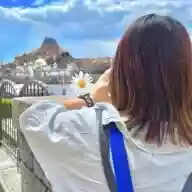[Children’s Songs] Let’s Sing of Spring! A Fun Collection of Nursery Rhymes, Folk Songs, and Children’s Songs
Spring brings warm, comfortable weather, so isn’t it a season when many of us head outdoors more often?
When you feel the beauty of the cherry blossoms and the refreshing spring breeze, many of you might find nostalgic songs coming to mind.
In this article, we’ll introduce children’s songs, folk songs, and traditional playground songs that are perfect for spring.
It’s recommended for anyone who wants to fully soak up the season—whether you want to listen to nostalgic spring tunes or discover songs that make you feel the spirit of spring.
We’ll share a rich selection, from timeless classics to songs sung in nurseries and kindergartens that children can enjoy.
- Children’s songs, folk songs, and nursery rhymes for March: fun spring hand-play songs.
- [For Children] Recommended Nursery Rhymes and Traditional Children’s Songs to Sing in April
- Nostalgic Children’s Songs, Folk Songs, and Nursery Rhymes: The Heart of Japan Passed Down Through Song
- [February Songs] Introducing children's songs, folk songs, nursery rhymes, and hand-play songs about Setsubun and winter!
- Nursery rhymes and fingerplay songs to enjoy in May! Songs perfect for the fresh green season
- [Children's Songs] Cute songs recommended for childcare. List of popular nursery rhymes.
- Recommended sakura songs for elementary school kids: classic and popular spring tunes
- Children’s songs, folk songs, and nursery rhymes for Hinamatsuri (Girls’ Day)
- A collection of cheerful nursery rhymes—songs that make you feel happy when you sing them.
- Popular Sakura Song Ranking [2025]
- Classic songs that sing about flowers. Popular songs related to flowers.
- Folk songs you’ll want to sing at karaoke: classic and popular tunes everyone can enjoy
- Recommended for cherry-blossom viewing season! Classic sakura songs and spring songs
[Children’s Songs] Let’s Sing of Spring! A Fun Collection of Nursery Rhymes, Folk Songs, and Play Songs (41–50)
Has the plum blossomed?

Ume wa Saita ka has been sung as an Edo hauta.
Nowadays, it’s best known as a parlor song performed to shamisen accompaniment, with geisha dancing to it.
The plum blossom is a flower that heralds spring and makes us feel its approach, yet the plum season is still quite cold.
One might expect the song to be about yearning for what comes after the plums—the scene of cherry blossoms in bloom and the mild weather of that time—but in fact it sings of the changing of human hearts and expresses feelings toward the opposite sex.
Lyrics that seem neatly tied to spring—like references to clams and short-necked clams—turn out, on closer reading, to carry quite different meanings.
[Children’s Songs] Let’s Sing of Spring! A Fun Collection of Nursery Rhymes, Folk Songs, and Traditional Children’s Songs (51–60)
UraraLyrics and composition: Yoshiki Mizuno

The April 2022 theme song for the popular program “Okaasan to Issho” is “Urara.” This song was written and composed by Yoshiki Mizuno.
In addition to depicting gentle springtime scenery, it conveys a positive and powerful message about facing difficulties.
Singing it is sure to lift your spirits.
Another major appeal is the catchy choreography that matches the lyrics.
Try moving your whole body with big motions.
It’s great for relieving lack of exercise and for a good stretch, too.
Spring has come.Lyrics by Tomorogi Yukio / Music by Mine Akira

Have you ever felt your heart leap with excitement at the arrival of spring? That feeling is what the song “Spring Has Come” sings about.
In the song, the joy and energy of welcoming spring are vividly expressed.
It’s mid-tempo, so enjoy singing it rhythmically and cheerfully.
Another key point is that the song carries the message “Let’s get along with everyone.” Keeping that in mind as you listen, you might also interpret “spring” as a metaphor for something good.
Friendly PathLyrics by Yasushi Mitoma / Music by Mitsuaki Kawamura

This song, Nakayoshi Komichi (Friendly Path), was released in 1939.
The music was composed by Mitsuyo Kawamura, with lyrics by Yasushi Mitoma.
It is one of Mitoma’s best-known works.
On the “Children’s Song Path,” a promenade in a housing complex in Kuki City, Saitama Prefecture, there are eight stone monuments dedicated to classic Japanese children’s songs such as Red Dragonfly and The Medaka School, and this song is among them.
The song has four verses and, as the title suggests, depicts friendly children wearing their randoseru backpacks on their way to school.
Perhaps they’re new first-graders; you can feel their excitement, as if everything is fun and new.
Harukaze DenwaLyrics by TAWARA Machi / Music by FUKUDA Wakako

Riding on the refreshing breeze of spring, this charming song feels as if the spring flowers are calling to tell us how they’re doing.
The flowers phoning in are cherry blossoms, dandelions, and sweet peas.
Each one shares its current situation and how it plans to go on living.
Unlike a gentle, piano-based children’s song, this piece features a lively, warm melody that perfectly suits the spring wind.
Don’t just focus on the cherry blossoms—sing out with energy while looking at the flowers mentioned in the lyrics and all sorts of other blooms too!
Haze or cloud?Lyrics by Iwao Kabe

In fact, this song “Kumo ka Kasumi” features Japanese lyrics set to a German folk tune.
First published in 1883, its lyrics were later revised, and it became a springtime favorite that appeared in music textbooks.
The original German folk song is also beloved as a children’s song about spring, known as “The Little Birds Have Come.” You can feel the yearning to hear the spring birds’ chirping and the resolve to endure the harsh winter cold while looking forward to news of blooming flowers.
It’s a piece that conveys both a sense of nature and a grand, expansive atmosphere.
Happy HinamatsuriJunko Kawamura

Hinamatsuri, the festival that heralds the arrival of spring.
And the perfect song to listen to in this season is this one! With Junko Kawamura’s vocals, a melody that conveys Japan’s traditional culture celebrates Hinamatsuri.
Released in 1936, this piece is included on the albums “Junko Kawamura: The Path of Children’s Songs I” and “Junko Kawamura: The Path of Children’s Songs II.” With its relaxed tempo and lyrics that even little ones can sing easily, be sure to sing it together with the whole family on Hinamatsuri.
It’s also perfect as background music when displaying Hina dolls or for celebratory gatherings.
Give this work a listen, and you’re sure to feel the arrival of spring!






